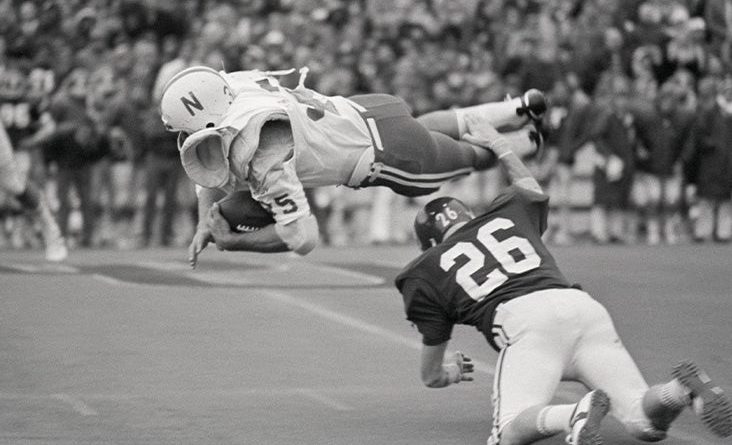Parkinson's: Playing American football may increase risk by 61%

- Nearly one million people in the United States and more than 8.5 million worldwide live with Parkinson’s disease.
- Sports with a high risk of head trauma, such as boxing and soccer, have been associated with an increased risk of Parkinson’s.
- Now, a study has suggested that American football may also increase the risk by as much as 61%.
According to the World Health Organization, the prevalence of Parkinson’s has doubled in the past 25 years. In 2019, the WHO estimated that more than 8.5 million individuals had the condition. Although the causes are not fully known, research suggests that head trauma may increase the risk of developing Parkinson’s.
People who play contact sports are more likely than the general population to sustain head trauma. Studies have associated head trauma with neurodegenerative disorders such as Alzheimer’s, amyotrophic lateral sclerosis (ALS), and Parkinson’s.
Now, a new study led by researchers from Boston University has linked American football with an increased risk of developing Parkinson’s, with the greatest risk seen in those who played the sport for the longest and at the highest level.
The study is published in JAMA Network Open.
Football and other sports‘ impact on Parkinson’s
In the new study, the researchers used data from 1,875 men who participated in sports — 729 men who played football, mostly at the amateur level, and 1,146 who played non-football sports (the control group). All the participants were enrolled in Fox Insight, an online clinical study of Parkinson’s sponsored by The Michael J. Fox Foundation for Parkinson’s Research.
Dr. Michael S. Okun, Parkinson’s Foundation National Medical Advisor, Adelaide Lackner Professor of Neurology and Executive Director of the Norman Fixel Institute for Neurological Diseases at the University of Florida Health, not involved in the study, stressed its importance:
“It is critically important we collect and publish more data on the relationship of contact sports, concussion and the later risk of Parkinson’s disease and parkinsonism.”
The researchers controlled for demographics and known Parkinson’s risk factors — age, education level, history of diabetes and heart disease, body mass index, traumatic brain injury with loss of consciousness, and family history of Parkinson’s.
In the survey, the men were asked whether they had a current diagnosis of Parkinson’s or parkinsonism (a group of neurological disorders that cause movement problems similar to those seen in Parkinson’s disease). They were also asked about their sporting history, particularly whether they had played ‘organized American tackle football.’
If they answered yes to playing football, they were then asked for details of what age they started football, the highest level at which they played (youth, high school, college, or professional), and how many seasons they had played at each level.
“The research is still ongoing, but studies have suggested both repeated brain trauma and even single incidence of severe brain trauma can predispose someone to neurodegenerative disorders, like Parkinson’s.”
— Dr. Walavan Sivakumar, board certified neurosurgeon and director of neurosurgery at Pacific Neuroscience Institute-South Bay in Torrance, California, who was not involved in the study.
Link between football and Parkinson’s
The researchers found that a history of playing football was linked to an increased risk of Parkinson’s or Parkinsonism, with that risk increasing the higher the number of seasons and level of football played.
Although the study was survey-based, it adds to growing evidence linking impact sports with neurodegenerative disorders, as Dr. Ray Dorsey, David M. Levy Professor of Neurology, Center for Health + Technology, University of Rochester, and co-author of Ending Parkinson’s Disease, who was also not involved in the study, explained:
“As the authors note, the study is not a random or necessarily representative sample of those with Parkinson’s disease or those who have played football. That said, the strength of the associations and the dose-response relationship all make the findings concerning.”
“More generally, the study adds to the increasing evidence that head trauma, especially repeated head trauma, is likely an important risk factor for developing Parkinson’s disease,” he added.
Overall, the risk was 61% higher in those with a history of playing football than in those who had played non-football sports.
“Though this study revealed that longer durations and higher levels of play were associated with a diagnosis of Parkinson’s disease […] the data will require rigorous replication. The ‘drip drip drip’ of studies showing concussion and Parkinson’s disease to be related are collectively compelling; however, before we draw conclusions about individual sports, we need to show and replicate these effects beyond a simple survey methodology.”
— Dr. Michael S. Okun
Parkinson’s disease and its causes
Parkinson’s disease is a neurodegenerative disorder that affects mainly the dopamine-producing neurons (nerve cells) in a part of the brain called the substantia nigra. As Parkinson’s progresses, it causes a range of symptoms, which often include:
- Tremor, primarily in the hands when at rest.
- Slowness of movement
- Limb rigidity, or stiffness
- Postural instability leading to problems with walking and balance
- Depression, anxiety, sleep disorders, and hallucinations
- A variety of cognitive impairments.
Although currently incurable, Parkinson’s is not fatal, and the progression is often slow, with motor symptoms generally experienced later in the disease progression. Treatments include dopaminergic medications, to replace the missing dopamine, speech and occupational therapy, and surgery to destroy small parts of the brain that are responsible for some symptoms.
Scientists believe that the disorder results from a combination of genetic and environmental factors. And studies have suggested that repeated head trauma increases the risk of Parkinson’s.
Avoid head trauma to lower Parkinson’s risk
Avoiding or limiting trauma to the head could help lower this risk.
“Brain trauma results in neuronal injury and possible cell death. The way the body responds to this injury initiates a cascade of events that results in a buildup of abnormal structures in the brain. For example, in Parkinson’s disease, there is a buildup of Lewy bodies, which are also present in increased percentages in people involved in contact sports,” Dr. Sivakumar told MNT.
Other theories as to why head trauma might increase the risk of these disorders include trauma-related inflammation and activation of microglia (immune cells in the brain that can cause inflammation). Head trauma has also been associated with disruption of the blood-brain barrier, mitochondrial dysfunction, and the accumulation of tau protein.
All the experts consulted stressed that avoiding head trauma should reduce the risk of Parkinson’s and other neurodegenerative disorders:
“Much of the world’s fastest-growing brain disease is preventable. Helmets when biking, modification to sports, such as no or reduced heading in soccer, and restrictions (e.g., by age), limitations (e.g., on practice), or modifications (e.g., flag football) can all lower our risk of head trauma and the many neurological disorders linked to it, including dementia, ALS, and Parkinson’s,” Dr. Dorsey told MNT.
And Dr. Okun agreed:
“The advice we [the Parkinson’s Foundation] offer […] is to avoid concussions and especially repeat concussions.”
“This is easier said than done; however, folks need to be educated before and during participation in sports about the plethora of data we now have linking head injuries to future neurological consequences,” he concluded.
Source: Read Full Article



